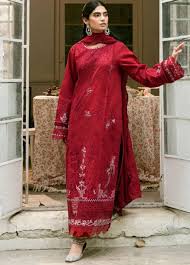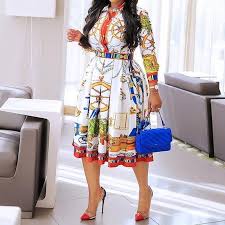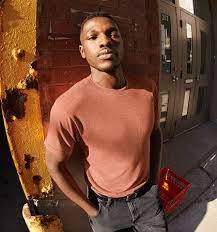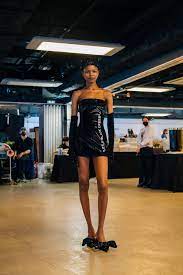Fashion Line: Embracing Style and Individuality
Fashion is an ever-evolving form of self-expression that allows individuals to showcase their unique personalities and tastes. Within the vast world of fashion, a fashion line holds a special place as it represents a cohesive collection of designs, concepts, and stories crafted by talented designers. These lines serve as a creative outlet for designers to translate their visions into wearable art, while also setting trends and influencing the way we dress.
A fashion line is not just about creating clothes; it is about creating an experience. It tells a story through each piece, inviting us into the designer’s world and allowing us to become part of their narrative. Whether it’s through bold prints, intricate details, or innovative silhouettes, a fashion line has the power to captivate our imaginations and ignite our passion for style.
One of the remarkable aspects of a fashion line is its ability to cater to diverse tastes and preferences. From haute couture to ready-to-wear collections, there is something for everyone. Each line has its own unique identity, reflecting the designer’s aesthetic sensibilities and personal inspirations. Some lines may focus on minimalism and clean lines, while others may embrace vibrant colors and avant-garde designs. This diversity within fashion lines ensures that individuals can find pieces that resonate with their personal style.
Moreover, a fashion line is not limited to clothing alone; it often extends into accessories such as bags, shoes, and jewelry. These complementary elements further enhance the overall aesthetic of the collection while providing endless opportunities for self-expression.
Fashion lines also play an essential role in setting trends that influence the industry as a whole. Designers have the power to shape our perceptions of what is stylish and fashionable at any given moment. They push boundaries by experimenting with new materials, techniques, or concepts that challenge conventional norms. By doing so, they inspire other designers, retailers, and consumers alike.
In recent years, fashion lines have also embraced the concept of sustainability and ethical practices. Many designers are now prioritizing environmentally friendly materials, fair trade practices, and transparent supply chains. This shift towards conscious fashion not only benefits the planet but also empowers consumers to make more informed choices about the clothes they wear.
Ultimately, a fashion line is a testament to the creativity, craftsmanship, and innovation within the fashion industry. It allows designers to leave their mark on the world by creating pieces that transcend time and trends. Moreover, it gives individuals the opportunity to express their individuality through style, empowering them to embrace their unique identity.
So, whether you find yourself drawn to a particular fashion line or prefer to mix and match pieces from various collections, remember that fashion is not just about following trends; it’s about celebrating your own personal style journey. Embrace the power of a fashion line and let it inspire you to express yourself confidently through the art of dressing.
Frequently Asked Questions About Fashion Lines: A Guide to Starting and Creating Your Own Clothing Brand
- What is line clothes?
- Is it hard to start a clothing brand?
- What is a fashion line?
- How to create a fashion brand?
What is line clothes?
A “line” in the context of clothing refers to a specific collection or range of garments created by a designer or fashion brand. It represents a cohesive set of clothing items that share a common theme, aesthetic, or design concept. A line can include various types of clothing such as dresses, tops, bottoms, outerwear, and accessories that are designed to be worn together as a coordinated collection.
For example, a fashion brand may release a spring/summer line that features lightweight fabrics, vibrant colors, and floral patterns. This line could consist of dresses, skirts, blouses, and other pieces that all reflect the same seasonal theme and design elements. Alternatively, a designer may create a line inspired by a specific era or cultural influence, resulting in garments with unique cuts, prints, or embellishments that tie them together.
By creating lines of clothing, designers have the opportunity to showcase their creativity and vision while providing consumers with an array of options to choose from. Lines often follow trends and seasonal inspirations but can also be driven by the designer’s personal style or artistic expression.
It’s worth noting that the term “line” can sometimes be used interchangeably with terms like “collection,” “range,” or “series” in the fashion industry. They all refer to the same concept of a cohesive set of garments created by a designer or brand.
Is it hard to start a clothing brand?
Starting a clothing brand can be both exciting and challenging. While it may seem daunting at first, with careful planning, dedication, and perseverance, it is possible to turn your vision into a successful reality. Here are some key factors to consider when starting a clothing brand:
- Concept and Brand Identity: Define your unique selling proposition and target audience. Determine the style, aesthetic, and values that will set your brand apart from others in the market.
- Market Research: Conduct thorough market research to understand current trends, consumer preferences, and competition in the industry. Identify gaps or opportunities that your brand can fill.
- Business Plan: Develop a comprehensive business plan that outlines your brand’s goals, strategies, financial projections, and marketing approach. This will serve as a roadmap for your clothing brand’s success.
- Sourcing and Production: Find reliable suppliers and manufacturers who can produce high-quality garments within your budget. Consider factors such as materials, production capacity, ethical sourcing practices, and turnaround time.
- Design and Development: Create designs that align with your brand identity while considering functionality, comfort, and market demand. Develop prototypes or samples to ensure the quality meets your standards before moving forward with production.
- Branding and Marketing: Build a strong brand identity through effective branding strategies such as logo design, website development, social media presence, and engaging content creation. Develop marketing plans to reach your target audience through digital marketing campaigns or collaborations with influencers.
- Sales Channels: Determine how you will sell your products – whether through e-commerce platforms, physical stores (if applicable), pop-up shops or collaborations with retailers.
- Operations and Logistics: Establish efficient systems for inventory management, order fulfillment, shipping logistics, customer service support to ensure smooth operations.
- Financial Management: Keep track of expenses related to manufacturing costs, marketing efforts, overheads such as rent or utilities to maintain financial stability.
- Adaptability and Persistence: Starting a clothing brand requires resilience and adaptability. Be prepared to learn from challenges, seek feedback, and continuously evolve your brand to meet changing market demands.
Starting a clothing brand is undoubtedly a complex process, but with passion, careful planning, and a strong understanding of the industry, it is possible to overcome the hurdles and create a successful brand. Remember to stay true to your vision while remaining open to feedback and opportunities for growth.
What is a fashion line?
A fashion line, also known as a clothing line or a fashion collection, refers to a cohesive and coordinated assortment of clothing and accessories created by a designer or a fashion brand. It is a curated selection of garments that share a common theme, aesthetic, or concept. A fashion line represents the designer’s creative vision and serves as a platform for expressing their unique style and ideas.
A fashion line typically includes various types of clothing items such as tops, bottoms, dresses, outerwear, and sometimes even footwear and accessories. These pieces are designed to be worn together or mixed and matched to create stylish outfits that reflect the overall theme or story behind the collection.
Fashion lines can be seasonal, with designers releasing new collections for spring/summer and autumn/winter each year. These seasonal lines often follow trends and incorporate colors, fabrics, and silhouettes that are popular for that particular time of year.
However, some fashion lines may have a more timeless or conceptual approach that transcends seasonal trends. These lines focus on creating enduring designs that can be worn year-round or have a longer-lasting appeal beyond current fashion trends.
Fashion lines can vary in terms of their target audience and price point. Some may cater to high-end luxury markets with intricate craftsmanship and exclusive materials, while others may target the mass market with more affordable options produced on a larger scale.
Designers often showcase their fashion lines through runway shows during fashion weeks or through lookbooks and presentations. These platforms allow them to present their collections to industry professionals, buyers, influencers, and consumers.
Fashion lines play an essential role in shaping trends within the industry as they inspire other designers, retailers, and consumers alike. They set the tone for what is considered fashionable at any given moment while reflecting cultural influences, societal changes, personal inspirations, or artistic concepts.
In summary, a fashion line is an artistic expression of clothing and accessories created by designers or brands. It represents their creative vision, style, and storytelling, offering a curated collection of garments that can be worn individually or combined to create fashionable looks.
How to create a fashion brand?
Creating a fashion brand is an exciting and challenging endeavor that requires careful planning, creativity, and a deep understanding of the fashion industry. Here are some essential steps to help you get started:
- Define Your Brand Identity: Start by clearly defining your brand’s vision, mission, and values. Determine the unique selling proposition (USP) that sets your brand apart from others in the market. Consider your target audience, their preferences, and how you want your brand to be perceived.
- Conduct Market Research: Thoroughly research the fashion market to identify trends, consumer preferences, and potential gaps in the market that your brand can fill. Understand your target audience’s needs, lifestyle, and purchasing behavior to tailor your offerings accordingly.
- Develop a Business Plan: Create a comprehensive business plan that outlines your brand’s goals, strategies, financial projections, and marketing plans. This will serve as a roadmap for your brand’s growth and help secure funding if needed.
- Design Your Products: Work on creating unique and cohesive designs that align with your brand identity. Consider factors such as quality, materials, functionality, and aesthetics while ensuring they resonate with your target audience.
- Source Suppliers and Manufacturers: Establish relationships with reliable suppliers and manufacturers who can produce high-quality products at affordable prices. Ensure they align with your ethical values if sustainability is part of your brand ethos.
- Build Your Brand Identity: Develop a compelling brand name, logo, tagline, and visual elements that reflect the essence of your brand. Invest in professional branding materials such as website design, packaging, labels/tags to create a consistent brand image.
- Establish an Online Presence: Create an engaging website or e-commerce platform where customers can explore and purchase your products online. Leverage social media platforms to showcase your designs, engage with customers, and build a loyal following.
- Implement Marketing Strategies: Devise marketing strategies tailored to reach your target audience. Utilize social media, influencer collaborations, fashion shows, PR campaigns, and partnerships to create brand awareness and generate buzz around your brand.
- Build Relationships: Network with industry professionals, influencers, bloggers, stylists, and fashion editors to gain exposure for your brand. Collaborate with like-minded brands or participate in fashion events to expand your reach.
- Provide Excellent Customer Service: Focus on delivering exceptional customer service to build a loyal customer base. Respond promptly to inquiries, offer hassle-free returns/exchanges, and listen to customer feedback to continuously improve your brand experience.
- Monitor and Adapt: Keep a close eye on market trends, consumer preferences, and competitors’ activities. Continuously adapt your designs and strategies to stay relevant and meet evolving customer demands.
Remember that building a successful fashion brand takes time, perseverance, and continuous innovation. Stay true to your brand’s identity while remaining flexible enough to adapt to changing market dynamics. With dedication and creativity, you can create a fashion brand that resonates with customers and stands the test of time.




